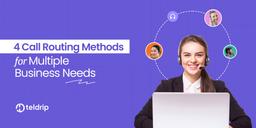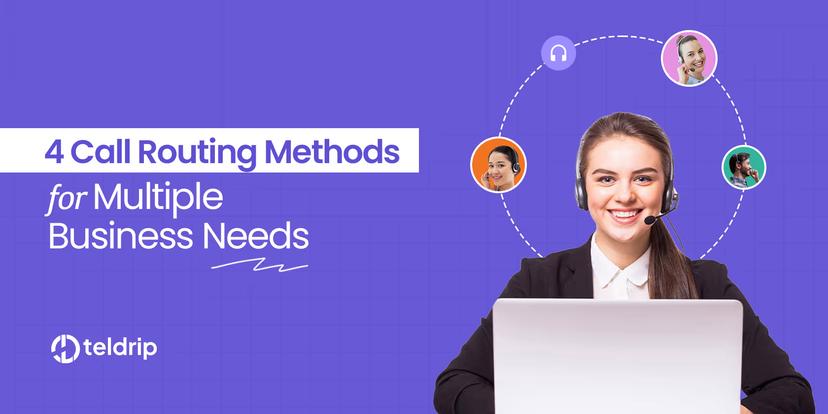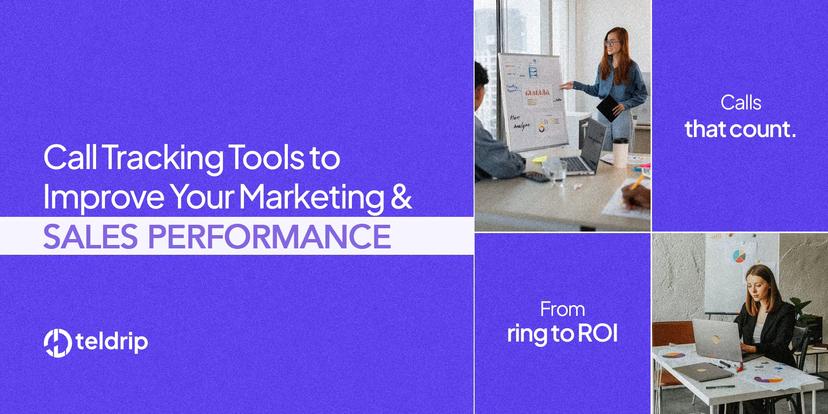Why Should We Use Google's tCPA and How to Migrate to It?

Google’s Target CPA or tCPA is one of the game changers in advertising for businesses. Be it marketers who are in charge of campaigns, business owners or strategies, anything that helps to enhance one’s campaigns cannot be overemphasised. In this Teldrip blog, experts are explaining why using Google’s tCPA is important. How can you transition your current campaigns? However, if you are running call tracking solutions then Teldip can be a great partner. It is the hub where call tracking strategies work a whole lot better in the competitive market.
What is Google's tCPA?
Target CPA(Cost Per Acquisition) is one of the keys to being effective key performance indicators in the company. Managing high conversion rate in Google while keeping cost to a minimum though automated bidding function. tCPA changes your bids on the basis of auction’s characteristics each time it is used. The tool employs machine learning in the bidding process so that you hit your acquisition targets without overspending.
In a nutshell, tCPA enables marketers to get to their desired CPA without having to manually change the bid. This means that it considers things like the device, location, time or day and the user’s behaviour. All these help in making it incredibly efficient for businesses.
Why Should We Use Google's tCPA?
1. Automation and Machine Learning
The tCPA incorporates the bidding process through automation. The operation of the machine learning algorithms in Google is such that it uses bid amounts, historical data and adapts bids.It means that you don’t have to manually adjust the bids continuously.However, Google automatically adjusts the bids for you, ensuring theyare set at the optimal position.
2. Improved Conversion Rates
Greater conversions by concentrating on the number of conversions. tCPA yields better outcomes than manual bid. This is because the algorithm is designed to deliver the planned target CPA. Thus it is making it possible to get more conversions at the specific price.
3. Saves Time
They save time with manual bidding as we have seen them to be time consuming. In essence, with tCPA, you will get free time. Otherwise it has been used in monitoring the campaigns to changes. All these are done by Google’s algorithm as it helps in heavy lifting.
4. Maximises ROI
The goal of tCPA is to get maximum ROI of the money to spend on marketing. When you make an effort to ensure that your company’s advertising. Marketing dollars drive cost per acquisition. Make it sure that every dollar you are spending on marketing is going to deliver a trackable and tangible business result.
5. Perfect for Call Tracking Solutions
Use tracking calls Teldrip is ideal to be incorporated in the call tracking solutions. This makes the tCPA most suitable for the strategy. In fact, the efficiency of call tracking is normally defined by how much cost it takes to get a lead or a call. tCPA enhances this by making sure that the bids correspond to the total expending used in getting phone calls.
6. Adapts to Market Changes
The advertising landscape is flexible enough to the changes that the market displays. The advertising industry is dynamic. tCPA is always dynamic and incorporates new data into every campaign which makes your campaigns favourable at all the right moments in the market.
7. Reduces Wasted Spend
tCPA prioritises efficiency. It only targets users who are likely to convert meaning it goes strictly through the audience. They may be interested in your product or service thus avoiding the chance of spending so much on the wrong audience.
How to Migrate to Google's tCPA?
It is clear that tCPA transition is not a big deal. However to achieve success you need to go through certain steps. Here in this blog we are displaying a step by step guide on the steps to follow to migrate your campaigns to Google’s tCPA.
Step 1: Assess Campaign Performance
Before switching to this type of advertisement, one should analyse the existing results. It is necessary to focus on the company’s crucial figures and ratios which are conversion rate, cost per conversion and general ROI. By ensuring that you are adequately prepared. After that, get ready for tCPA’s machine learning algorithm because you have enough conversion data. As per Google, at least you should have 30 conversions in between the last 30 days for tCPA, so that it can perform effectively.
Step 2: Set a Realistic Target CPA
It is important to define your target CPA, or the amount that you are willing to spend on customer acquisition. This will be the basis of Google’s algorithm to determine the best sites to display to respond to users’ query or search results. Sometimes when setting your goal too high, you do not get the right number of conversions. On the other hand, setting a low target CPA may lead to formation of what may be deemed as wasted opportunities.
Step 3: Switching to Smart Bidding
Be on your Google Ads dashboard and need your log-in to Google Ads. With this you can select the specific campaign you would like to convert. Move to the bidding tab and choose target CPA under the smart bidding strategies. Enter the desired CPA, and Google will start optimising the bids accordingly.
Step 4: Monitor Performance
After moving to tCPA, make sure to keep track of their performance levels. It is a fact that Google’s system is strong, however it needs some amount of time to “ understand” your campaign. Essentially this is referred to as the learning phase. Because the target adjustment is carried out by the algorithm.
We often have variations in accomplishment during this time of the year. The best thing is to leave it for sometime before changing the frequencies, preferably after two to three weeks.
Step 5: Adjust Your Target CPA
After the learning phase, review the results. If the CPA is lower than expected, try adjusting it up or down. Keep refining the landing page to achieve the best conversion results within your target cost.
Step 6: Scale Your Campaigns
Ideally once the right CPA has been identified then the campaigns can in turn be scaled. You should raise your budget and use tCPA approach for other advertising campaigns to get more conversions with all your advertisements.
Best Practices for Using tCPA
-
Track Conversions Accurately: Conversion tracking should be precise. Conversion tracking should be precise when using tCPA Tracking of conversions is important when using tCPA. Do not make confusions or mistakes when setting up the tracking system. When utilising call tracking services such as Teldrip, one can track conversions by way of phone calls and thus have a more in depth insight into the campaign.
-
Use Data-Driven Insights: Understand Data is everything. In order to measure your campaign data you should use Google Analytics and Other Tools. Detect patterns and look for patterns in the data and then adjust your approaches accordingly. It is a fact that data is everything.
-
Test Multiple Campaigns: Do not depend on one single campaign. Try out different campaigns and use tCPA in order to identify which among the campaigns yields the best results. There is always an insight from A/B testing as to which messaging or creatives, or audiences are more likely to convert.
-
Focus on High-Intent Audiences: tCPA focuses on high-Intent audiences The high-intent niche performs well on tCPA. It is essential that your campaigns target the users that are closer to being able to make a purchase. Here, retargeting or remarketing can be very useful.
-
Be Patient During the Learning Phase: It takes time for Google’s algorithms to learn that is why one should be patient especially during the initial stage. You should give the system some time to accumulate adequate data before making a change.
Common Challenges with tCPA
However Google’s tCPA is very strong yet it comes with lots of problems. Here are a few obstacles you may face when migrating to tCPA:
-
Low Conversion Data: It can happen, however, to fail to provide accurate bids for your campaigns if they do not produce a sufficient number of conversions.
-
Fluctuating Results: During the learning phase you may find fluctuations in performance of the model. It may take a while for the algorithm to complete its work so relax and wait.
-
Over-reliance on Automation: While tCPA is efficient, relying solely on automated analysis without reviewing the data may not be viable.
How Teldrip Leverages Google's tCPA for Call Tracking
Teldrip is one of a kind call tracking solutions that easily synchronizes Google's tCPA. It is therefore crucial that businesses can boost their call tracking performance by implementing Teldrip with Google Ads. Here’s how:
-
Real-Time Call Tracking: Teldrip gives real time data about the call volume in terms of leads so businesses can determine the cost per lead. This data is useful for tCPA as it will help the algorithm to give proper bids properly.
-
Enhanced Conversion Tracking: Teldrip monitors calls as conversion for which can be linked to Google Ads. This minimises mistakes in CPA reporting, leading to better optimization.
-
In-Depth Reporting: Teldrip has excellent analysis to determine the effectiveness of calls, which gives business the real cost of leads. The tCPA algorithm integrates all this information to generate the highest possible ROI.
-
Customizable Solutions: Whether a business is small or large, Teldrip provides customised call tracking tools which integrate with Google’s sophisticated bidding mechanism so businesses can receive the optimum return on their investment.
Final Thought
Google’s tCPA helps organisations manage their advertising efficiently. It maximises ROI by optimising bids for the best results. Through auto bidding as well as optimising for conversion, tCPA eliminates the chances of making wrong estimations on campaign management. When you are in the business of using call tracking solutions such as Teldrip then the combination of tCPA and live data can be highly effective. Teldrip does not only help businesses monitor the calls but also link with Google’s intelligent bidding system to guarantee that all the money invested means business growth. Let Teldrip be your partner.
About Author

Brian Harris
Sr. Content EditorBrian Harris is a leading expert in artificial intelligence and machine learning, with a focus on natural language processing and sentiment analysis. With a background in computer science, he has dedicated his career to exploring innovative ways to improve human-computer interaction. As a thought leader in the field, Brian showcases his expertise through engaging blog posts and industry insights, providing valuable guidance to readers to use Teldrip’s innovative solutions effectively.
Recent Posts

4 Call Routing Methods for Multiple Business Needs

Unlocking Pay Per Call Tracking: Top 5 Niches to Expand Your Revenues

Call Tracking Tools to Improve Your Marketing and Sales Performance

How will Intelligent Virtual Agents Redefine the Future of Financial Services in 2026?

Teldrip - 8 Steps to Run Your First Pay-Per-Call Campaign on Facebook




Comments (0)
Post a Comment